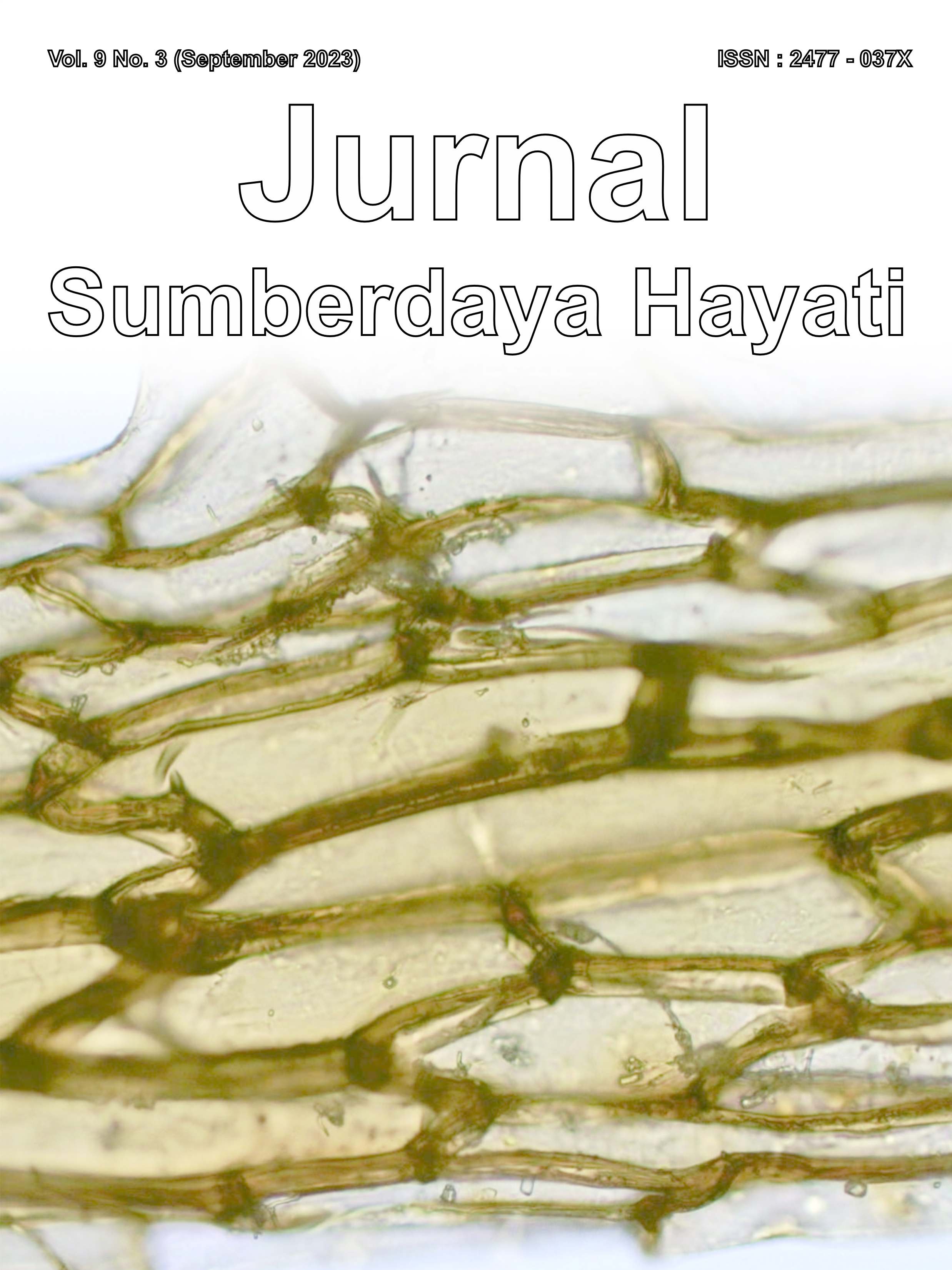Identifikasi Berdasarkan Anatomi Tumbuhan Pakan dalam Feses Gajah Sumatra (Elephas maximus sumatranus) di Taman Nasional Way Kambas
Identification Based on the Anatomy of Forage Plants in the Fecal of the Sumatran Elephant (Elephas maximus sumatranus) in Way Kambas National Park
DOI:
https://doi.org/10.29244/jsdh.9.3.125-133Abstract
The diversity of forage plant species for elephants can be analyzed by observing the anatomy of undigested plant fragments in the fecal. This study aims to identify forage plants from the fecal samples of Sumatran elephant in Way Kambas National Park. The research methods include collected fecal samples at Way Kambas National Park, prepared slide microscope of epidermis of the plant fragments using the whole mount method, observed the anatomical characters and identified the plant fragments based on data from previous studies and reference. The results obtained 34 types of epidermis which were differentiated based on the characteristics of epidermal cell, stomata and trichomes. These epidermis types were used to identify the plants forage by Sumatran elephants. We found leaf fragment of four families, namely Arecaceae, Cyperaceae, Poaceae and Zingiberaceae. The most common fragments found in the fecal samples were the leaf fragments of Poaceae (28 type epidermis). Anatomical study on the plant fragments in fecal can be used as an alternative method in studying plants consumed by elephant.
Downloads
Downloads
Published
Issue
Section
License
Authors who submit and publish with this journal agree to the following terms:
1. Authors retain copyright and grant the journal/publisher non exclusive publishing rights with the work simultaneously licensed under a Creative Commons Attribution 4.0 International License.
![]()














